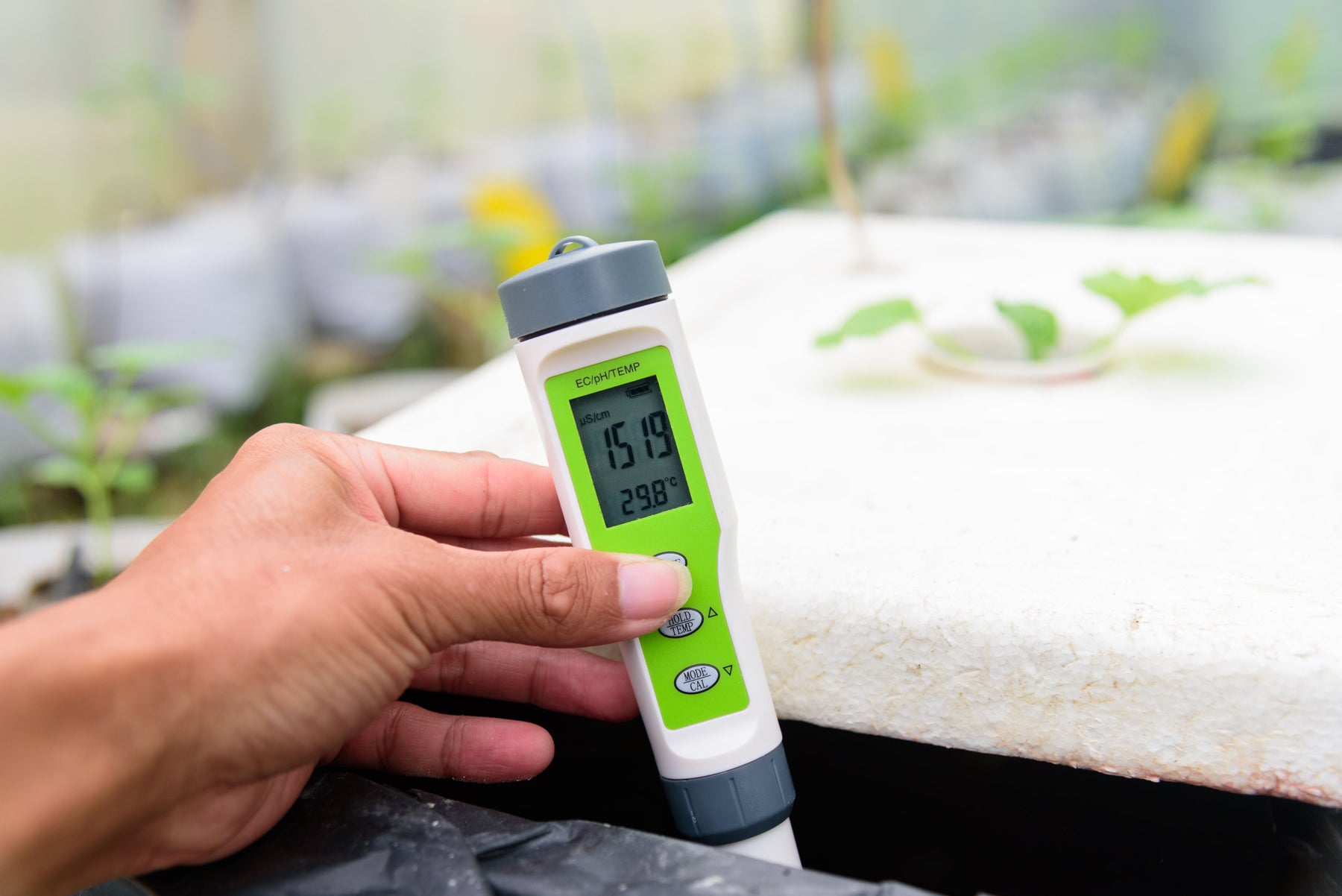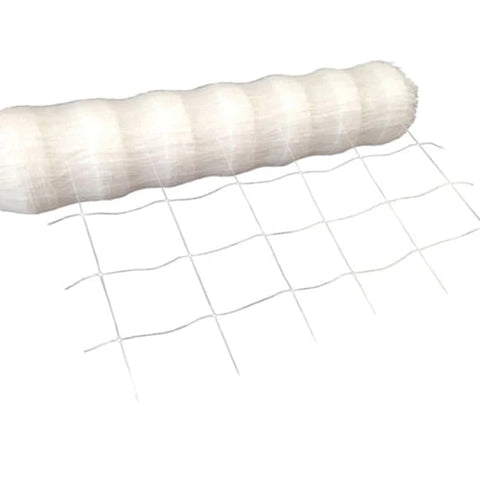
Why Hydroponic Systems Fail
Beginners to hydroponics are often dumbfounded as to why their system isn't providing them with the highest quality or quantity of yields.
The reality (which is generally only appreciated by veterans) is that it's incredibly easy for rookies to make ruinous errors in their first hydroponic systems. This is due to the fact that there are myriad points of failure for an indoor grow. While some methods are more complicated than others, you'll find that this is essentially true regardless of which system you decide to go with.
Take it from us... as a long-running hydroponics retailer local to Brisbane, Queensland, Australia, the team here at Fran's Hydroponics have certainly had our fair share of chats with novice growers who are completely unsure what they've been doing wrong!
If you're experiencing crop failure or sub-optimal results in your grow, there could be a range of variables to blame. It could be coming from plain old nutrient deficiencies/toxicities, or perhaps a particularly nasty pH or EC imbalance; these are, after all, the most common culprits.
However, other environmental conditions could also be at play - like the artificial light schedule, poor ventilation, humidity, temperature or It could even come down to a lack of pruning, trimming and plant training!
Plants may be quite resilient, but they also care a lot about certain factors, and the careful management of these conditions is vital for them to thrive. At the end of the day, a hydroponics system is only as effective as its weakest link.
That's why we're going to provide you with 5 amazing, easy-to-use products that offer various ways to prevent or solve the most ubiquitous breakdowns in a hydroponic system's overall effectiveness.
Growing plants indoors is often a matter of trial and error - and while this is by no means an exhaustive list, picking up this equipment and following our directions will no doubt get you that little bit closer to the hydroponic excellence you're striving for.
Achieve Expert-Level Results With These 5 Pieces of Hydroponics Equipment!
1. pH/EC Pen
Maintaining the right pH and EC is essential. These are the most basic tools in the belt of a hydroponic farmer. If your goal is to maximise the quality and quantity of your yields, you don't want to take these factors for granted.

pH is a measurement of the acidity or alkalinity of an aqueous solution. pH should always be monitored in hydroponic/aquaponic cultivations to ensure that your plants are able to uptake nutrients effectively, a pH too low or too high will lockout the availability of certain nutrients to the plants - leading to deficiencies and toxicity!
There are a myriad of ways to measure pH, but the most accurate way to do so is with a pH Pen. These simple devices let you read the exact pH level of your water/nutrient solution and most pens will also measure temperature too which is also handy to know!
Our top pick for a pH Pen is the Bluelab pH Pen, but the HM PH Pens are also very good!
pH Pens may seem pricey at first compared to dropper kits, but as long as you keep the probe healthy with KCI Storage Solution and calibrate regularly with pH 4.0 and 7.0 solution, your Pen will last you a long time and you will be rewarded with much better yields! Plus, you simply won't get a more accurate reading than a pH Pen compared to a dropper test.
BONUS: You can adjust pH using either pH Up or Down!
EC is a measurement of the conductivity of water, which varies based upon the amount of dissolved mineral nutrients in a solution. It essentially tells you how much your plants are feeding, and can help you understand when you need to add/dilute the amount of nutrient in your feeding schedule. This helps prevent things like nutrient burn and wastage by optimising your feed amount!
An EC Pen functions very similarly to a pH Pen, except it measures EC (duh!). They are just as easy to use and maintain, and rarely need to be calibrated. Checking your probe's accuracy with some EC 2.77 Solution every now and again will let you know when you need to calibrate.

Our top pick for measuring EC is the classic Bluelab EC Tuncheon; they are near un-killable, super reliable and also act as a stirring stick! Great alternatives are the Bluelab EC Pen and the HM EC Pen too!
Together, this information tells you a lot about the kinds of adjustments you need to make to your reservoir and feed schedule to keep it within a healthy range for your plants. Without carefully monitoring and adjusting these parameters, you are essentially growing blind.
Our ultimate pick is the Bluelab EC/pH Pen Combo Pack, which comes with both types of pen and enough of the maintenance solutions to keep your Pens happy for a while!
2. A Ventilation Fan for Air IN-TAKE!

So if you have a basic setup, you probably already have an exhaust fan, but if you want to get serious with your ventilation, it's imperative to have a matching in-take fan.
A benefit of having a fan specifically for in-take is that you're no longer relying on your exhaust fan's negative pressure to suck in fresh air for your plants. An in-take fan pulls in much, much more fresh air and also helps move the canopy around, aiding in stem strength development.
In-take fans also help maintain temperature and humidity levels within your grow environment by working with the exhaust fan to constantly exchange stale air!
Ideally, when considering what you should get for your second fan, you'll want to get the same model as your exhaust fan which will make sure that there's no weird pressure differences. The only time we'd recommend a different model would be if your exhaust fan is pulling through a carbon-filter, in which case we'd recommend getting a weaker or smaller in-take fan so that it doesn't overpower your Exhaust fan!
Check out our range of Fans and Ventilation options to make the right choice for your setup!
3. Scrog Net/Plant Trainers
If you want to increase the efficiency of your light without changing your light at all, the absolute best way is to train the canopy of your plants! Creating an evenly spaced canopy allows for better light penetration to the under-canopy, allowing the lower branches to grow stronger and better.

This is most easily done by using a scrog net, which is just a tight net that forms a horizontal grid over the top of your plant which you can use to train all the branches through as they grow up. You can send the outer-most branches to the edges of the net and allow for the lower branches to receive equal amount of light.
Scrog nets come in all sizes so there's bound to be one that fits your specific grow area and you can browse them here!
Another option is to use dedicated branch trainers, such as LeafLock's Branch Whisperer's, which allow to train specific branches without scrogging the whole plant. For ultimate results, you can combine the two!
4. Hygrometer/Thermometer

One of the best monitoring devices you can add to your setup is the Hygrometer/Thermometer, they are relatively inexpensive and are very easy to install.
These devices measure your humidity and temperature, which allows you to know when your grow environment sits outside the preferred boundaries. The reason it's important to understand where your Humidity and Temperature are at is because the optimal levels change depending on your stage of growth!
Generally if you have a plant that fruits and/or flowers, you'll want higher humidity and temperature levels to get better vegetative growth, and when things start to flower and fruit you want to drop those levels back as to avoid things like mold growing and ruining your potential harvest due to high humidity in the tighter spaces, or stress from over heating.
When it comes to adjusting your humidity, there are of course, Dehumidifiers and Humidifiers that do an excellent job of keeping your humidity exactly where you want it BUT if you took our advice about having that intake fan then you can just turn your fans up or down to increase/decrease airflow to manage Humidity, assuming your outside environment is less Humid than inside your tent. This also helps with temperature as long as your intake is pulling from a source of cooler air i.e., off some tiles or concrete down low or from an Air Conditioner if you're fancy.
The point is, if you don't have a way to measure humidity or temperature, you're not going to know for sure when things need to change! So get a device that does both and never have to grow blind again!
5. A Lighting Timer!
Did you know that most plants that flower and fruit need a different amount of time in the sun depending on what stage of growth they're at? Alongside temperature, it's one of the largest factors as to why plants are seasonal!

How do we replicate this to our advantage in our controlled growing environment? By operating our grow lights using a timer!
Timers are not very expensive and the most standard one is the classic 24hr Mechanical Timer, which are dead simple to use and very effective for lighting schedules. What timers allow us to do is to change the amount of hours our lights are turned on and off to simulate our own day/night cycle. The advantage of this is that we can ensure that when our plants are in the vegetative state, we can give them the maximum amount of daylight hours to get to optimal size, then change the lighting schedule to have less daylight hours to encourage flower and fruit setting.
A timer allows you to set and forget so you don't have to manually turn your lights on and off, and ensures your plants are receiving optimal light no matter what stage of growth they're at. The preferred lighting schedule is dependent on what you're growing so make sure you know what that is and set your timer accordingly.
PRO TIP: You can always buy two timers and set one for vegetative growth and the other for fruiting stage, so you can just swap them over instead of resetting the one timer over and over again!
No matter what light you have, this coupled with canopy training means you get the most out of what you got, which is always a win in our books!
Closing Remarks:
Using all our recommendations to understand things like pH, EC, Airflow, Ventilation, Humidity, Temperature and Light Exposure/Cycles will increase your awareness and understanding of your system, and your plant specific needs. Controlling these not only prevents things going wrong, it allows for you to get the most out of what you have. This means that you can confidently assure yourself that if you're still not getting the results you want, despite all the above being taken care of, then you can look at getting better nutrients or upgrading your lights to really see the improvement.
These basic practices do not change whether you've got the most high end set up on the planet or not, so using these essential pieces of equipment will make sure you're always growing your best!
Added to your cart:
- (-)
